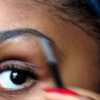
 By
Beauty Adams
By
Beauty Adams
Hair loss is a common problem that affects millions of people around the world. It can be caused by various factors, such as genetics, hormones, stress, diet, medical conditions, medications, and aging. Hair loss can have a negative impact on your self-esteem, confidence, and appearance. But don’t worry, there are many ways to prevent or treat hair loss and promote healthy hair growth. In this blog post, we will share some tips, treatments, and FAQs on how to stop hair loss and keep your hair looking great.
The first step to stop hair loss is to take good care of your hair and scalp. Here are some tips to prevent hair loss and improve your hair health:
If you have already experienced hair loss, don’t lose hope. There are many treatments available that can help you regrow your hair or conceal your hair loss. Here are some of the most common and effective treatments for hair loss:
Here are some of the most frequently asked questions on hair loss and their answers:
I hope you enjoyed reading this blog post and learned something new. If you have any questions or comments, please feel free to leave them below. Thank you for your attention and have a nice day.





Never miss an important update. Be the first to receive our exclusive beauty tips straight into your inbox.